The warp and the weft, two weaved yarn strands, are used to create the delicate handcrafted fabric known as Termeh(Iranian Souvenirs). Typically, the weft is woven looser than the warp. The majority of the wool or silk used to create Termeh Luxury Persian Fabric is adorned with conventional Iranian designs.
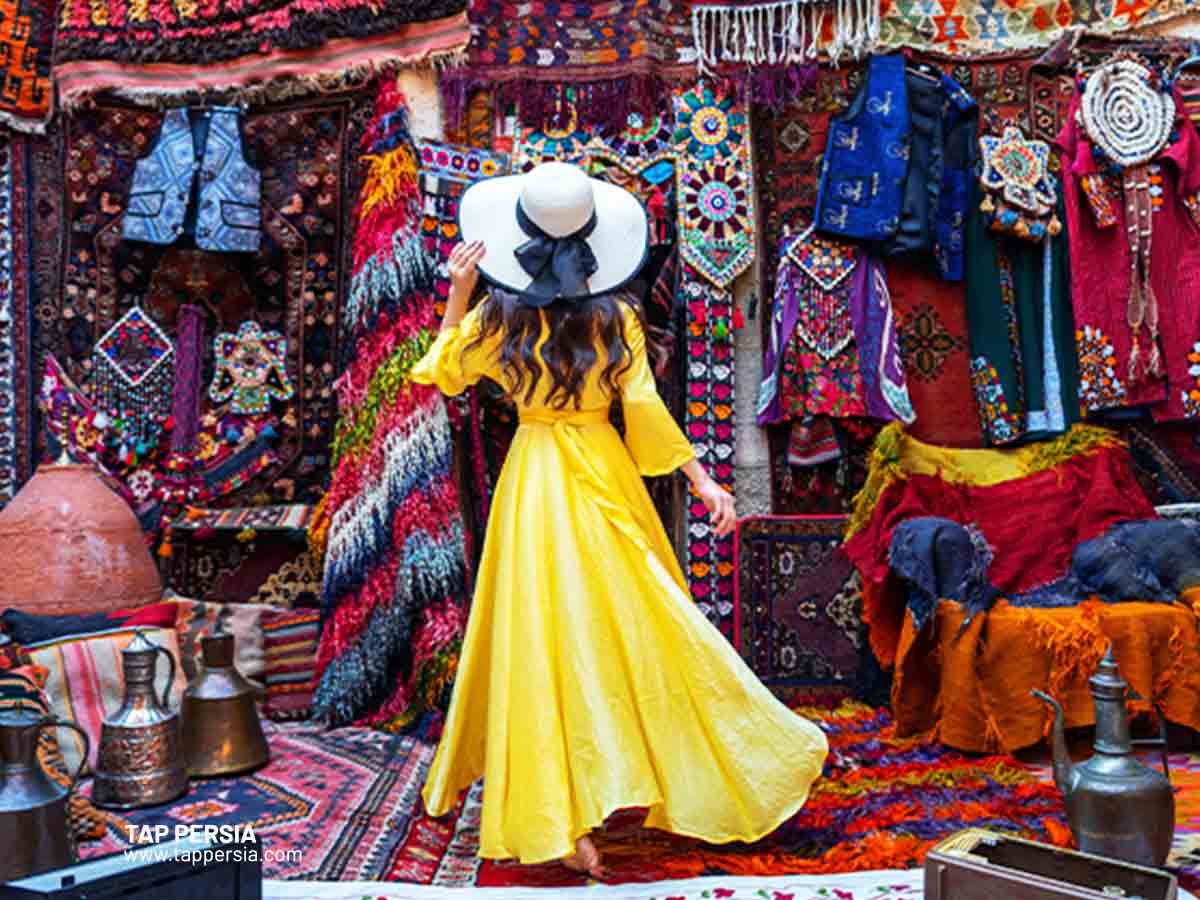
Let’s start with the introduction of Persian Termeh and how it is made:
What is Termeh?
A type of hand-woven Persian fabric known as “Termeh” is regarded as a valuable creation of Iran’s textile industry.
A fragile fiber is used in the handwoven cloth known as Termeh(Iranian handicrafts). It is constructed from wool, silk, or a coat decorated with conventional Iranian motifs. Different colored curving designs, including paisley and goljam, are woven into Termeh. A common design employed in Termeh weaving is the goljam, sometimes referred to as the Shah Abbasi flower. In the past, Termeh was used to weave curtains, textiles for aristocratic households, and gifts for wedding rituals.
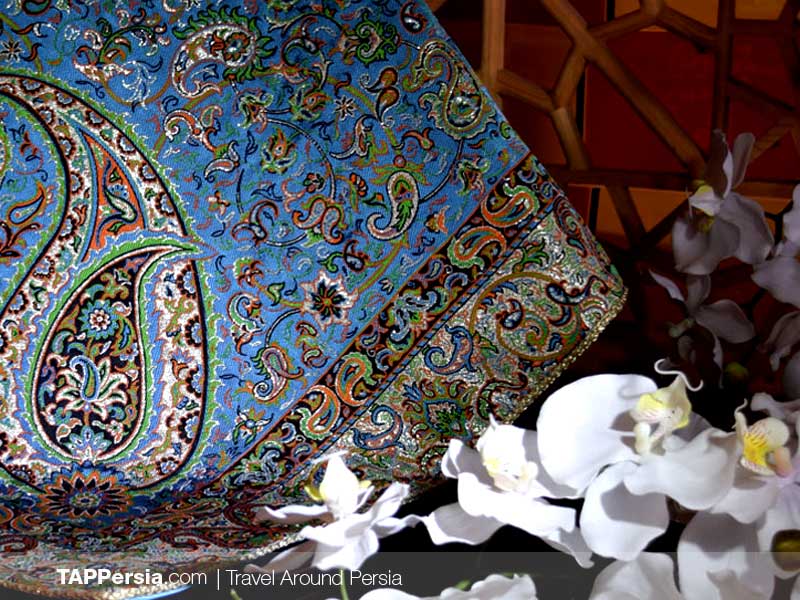
Termeh has a wide range of colors and patterns, yet it also has a consistent structure. The geometric forms, cypress tree, paisley, fish and birds are a few examples of frequent themes.
The Paisley pattern is the most prevalent on Termeh. A bent Cypress tree is seen in the paisley pattern. Iranians have revered cypress trees since ancient times, and they still do now. This tree represents perseverance and fortitude in the face of difficulties.
Providing the raw materials is the initial stage in the weaving of Termeh. Termeh is often woven from silk or wool. However, because it can be dyed into numerous colors, white wool is the most popular. Wool from the Termeh plant must be of superior quality and be longer. Iran’s sheep produce wool that is exceptionally fine and largely white and brilliant. In Iran in the sixteenth century, advances in spinning, twisting, dying, and weaving wool were significant.
The Intricate Process of Making Termeh
Let’s go through the process of how Termeh is made:
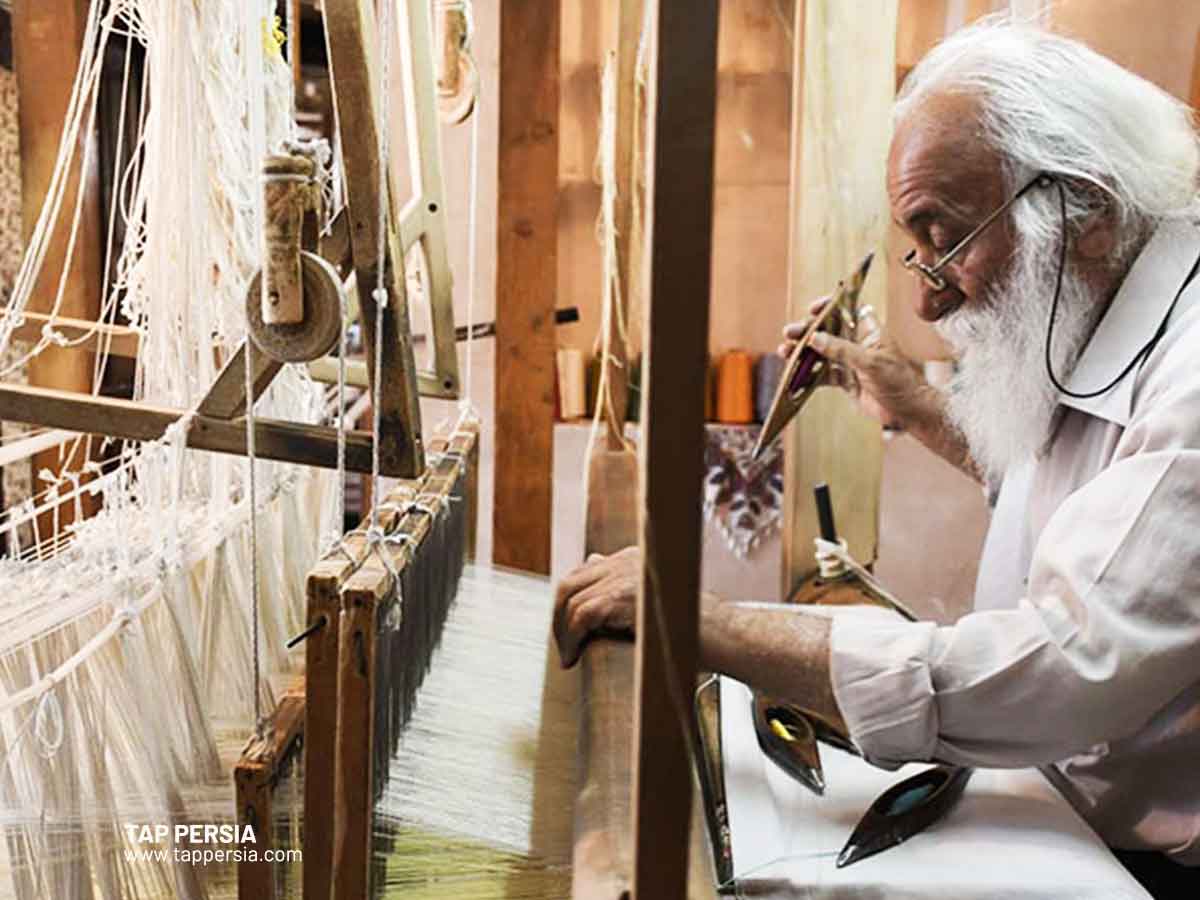
1.Washing the Wool
After purchasing high-quality wool, the first step is to wash it to remove fat and impurities. It is best to do this before dying the yarn. Before being sheared, sheep in Iran are cleaned in water for about ten minutes, after which the fleece is washed in alkali to remove the fat, and then rinsed in water once more. It becomes clean and shiny in this manner.
2.Bleaching the Wool
The fleece can be bleached using one of two procedures.
The first approach involves spreading the fleece on grass. In this way, the dew will be absorbed, and when it evaporates, the fleece will turn white. This procedure is repeated several times.
The second technique involves employing sulfate to whiten the fleece.
3.Fixing the Color
One of the most crucial procedures in preparing the wool for Termeh is dyeing the fleece when it is sufficiently white. A substance called Dandaneh is used to alleviate this problem because colors applied straight to wool do not last very long. Before being employed, this chemical must be refined to improve its performance. There are many different types of dandaneh, but among the most widely used ones are white alum, lead, zinc, tin, chlorine, and various sulphates.
4.Dyeing with Plant Based Colors
Iranian Termeh often uses plant-based dyes as its colors. The flowers, roots, leaves, trunks, fruit husks, and trunks of plants may all provide these colors. This is due to the fact that Termeh is a fabric that requires a lot of upkeep and is quickly harmed by dampness and moths.
The Deep-Rooted History of Termeh
Zoroastrians invented the craft of Termeh weaving in the beginning and utilized it to create traditional and sacred trousers and other clothing, notably the striped kind as a waist scarf for their rituals and festivities. Termeh is typically recognized by its distinctive paisley design, which has a unique history and explanation. The old Iranian-Zoroastrian civilization, which is represented by a bent Cypress Tree, is where the symbol and function of the Paisley Pattern in Termeh originates. In the past, all Termeh was entirely handwoven, with no assistance from any machinery. Over the next centuries, conventional Termeh weaving equipment were steadily developed.
All types of Termeh were woven using the same conventional machinery up until forty or fifty years ago. Silk may now be produced using modern equipment in a range of thicknesses and widths. The commencement of the Safavid era (16th century) in Iran is when Termeh weaving began. Of fact, some people think that termeh originated in Iran and was later brought to Kashmir, while others think that termeh originated in central Asia, namely in the Kashmir Mountains.
It is a well-known fact that Iranians have a unique flair for creating designs and motifs for this beautiful cloth. The Safavid Dynasty’s Abbas Shah saw the height of the weaving Termeh craft, which later became one of Iran’s most significant exports and a well-known craft worldwide.
The Cultural Significance of Termeh in Iran
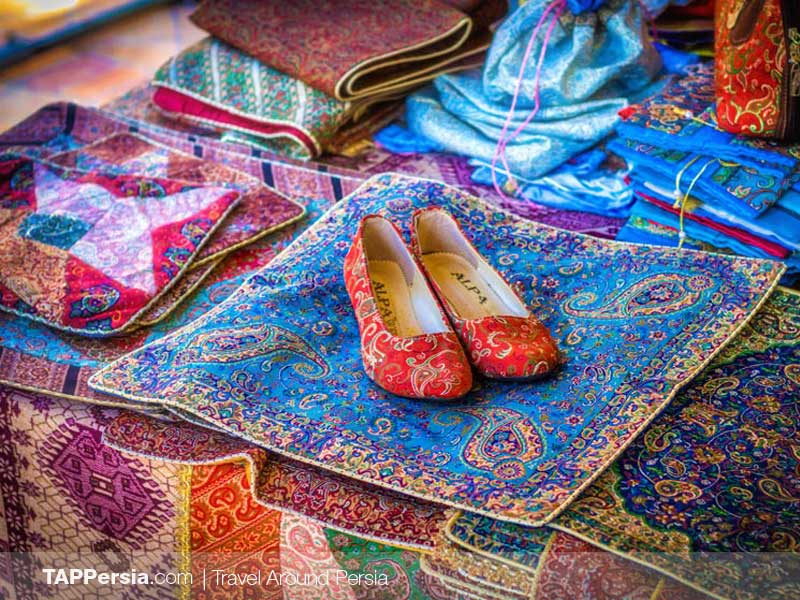
In the past, people from the noble, aristocratic, and monarchal classes tended to wear this delicate and fine cloth and sew it for a variety of purposes, including aristocratic and noble clothing, curtains, prayer rugs, and robes. However, in the present, the majority of upper- and middle-class people give it to each other as gifts at weddings, use it on the haft sin table for Nowruz, official or family occasions, and occasionally use it as furniture cloth and the usual Termeh tablecloth.
Where and How to Buy Authentic Termeh
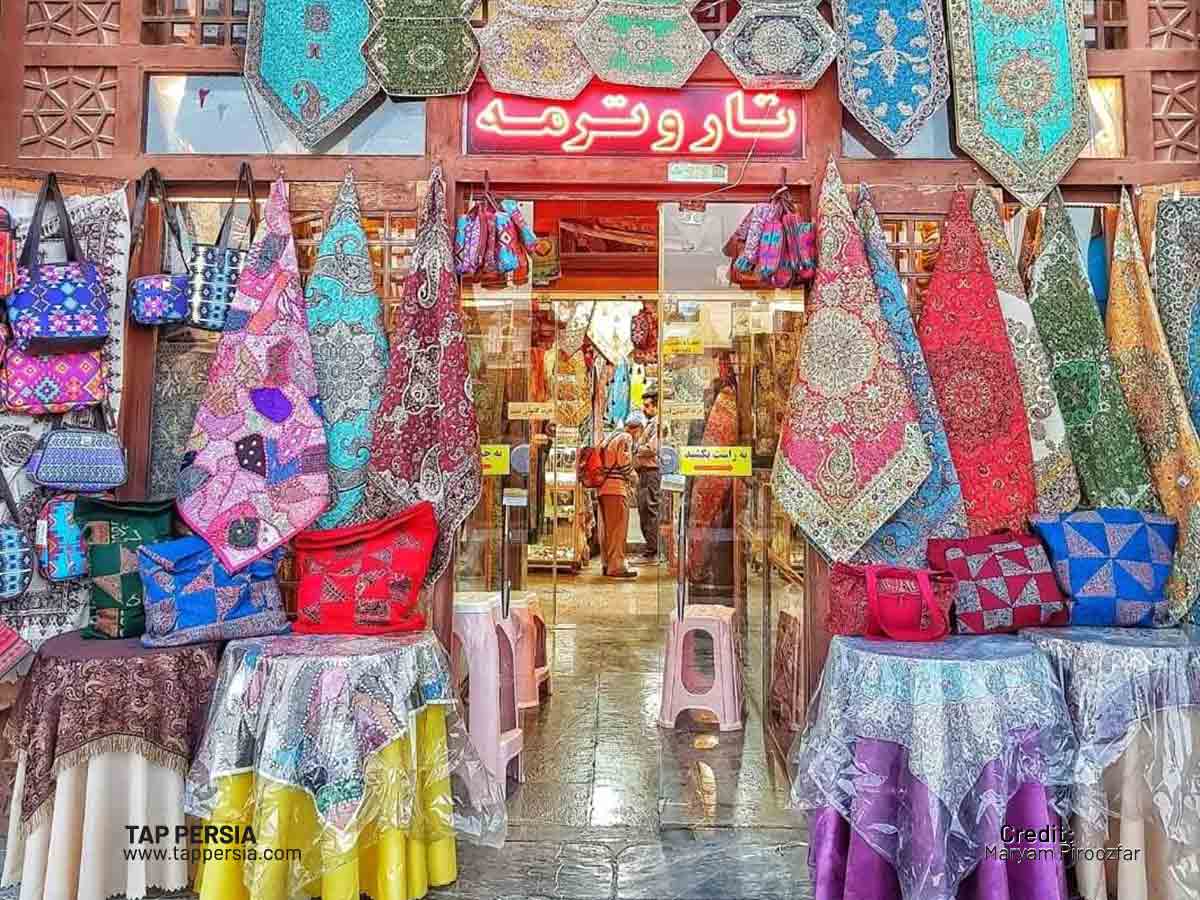
Here is some information about how to know the authenticity of a Termeh and where to buy them:
Identifying High-Quality Termeh: Tips for Buyers
· Authentic and traditional designs, a 60% viscose warp, delicate linen wool, and natural silk yarn are some of the characteristics of handmade Termeh. It also comes in seven colors and is consistently consistent.
· The standard of Termeh is determined by the thread’s quality and the number of colors employed in the weaving process. There are up to 300 distinct colors utilised in some really expensive Termehs.
· The fabric’s quantity of layers and the kind of embroidery on it both increase the worth of Termeh.
If you wish to purchase Termeh, we advise consulting a professional first. You may locate them in the old bazaars of Yazd and Isfahan.
Best Places to Buy Termeh in Iran and Online

The two cities with the most likelihood of being the birthplace of Termeh fabric are Yazd and Isfahan, both of which are home to numerous artisans who practise this magnificent craft. High-quality handwoven Termeh may be found at the grand bazaars of both cities; you can browse these important historical sites and contrast several varieties of your preferred fabric.
You can also purchase these exquisite fabrics online thanks to the abundance of stores that sell wonderful and high-quality Termehs.



Comment (0)